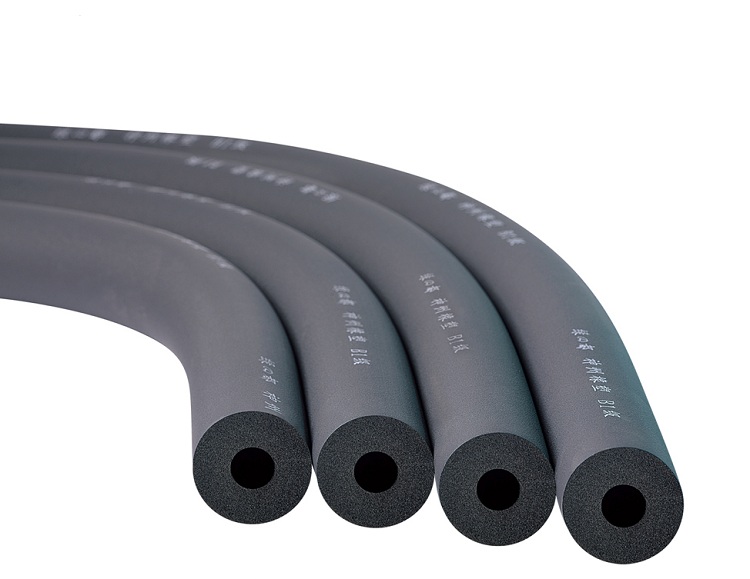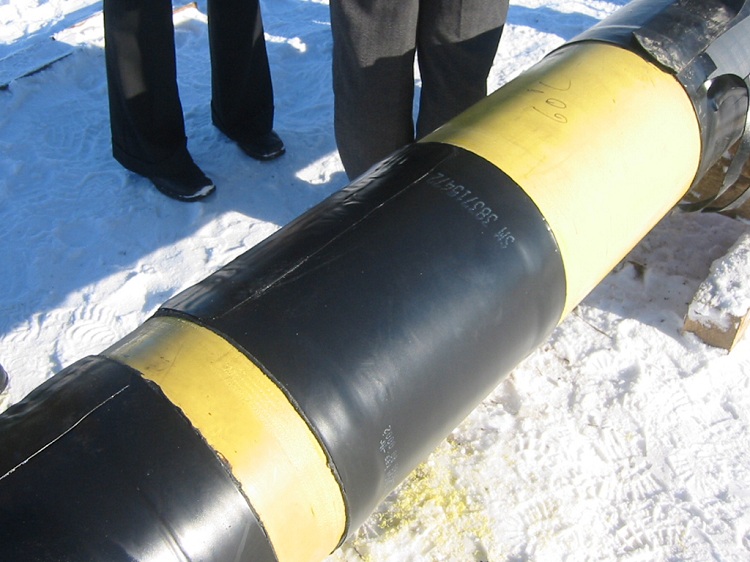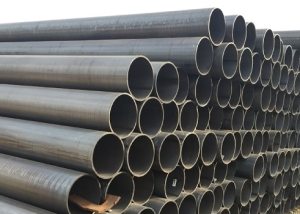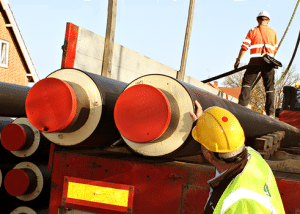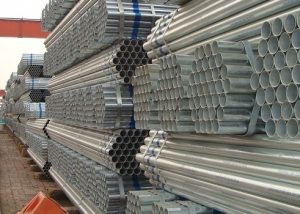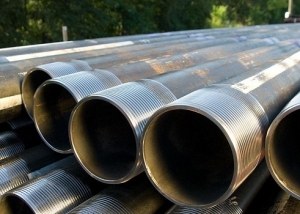Insulation of pipelines is a very important event that is carried out to protect communication from environmental phenomena, to prevent heat loss, etc. Pipelines for different purposes differ in material, so each type of pipeline requires its own type of insulation material. Isolation of various communications not only protects them from external influences, but also increases the efficiency, as well as the operational life of the highway.

Measures to isolate pipelines are carried out in order to insulate, protect against moisture and ultraviolet radiation, as well as from damage that animals or people can cause
Content
Materials for insulation of hot water pipelines
Communications transporting hot water require the organization of insulation, which is characterized by a low coefficient of thermal conductivity. This is necessary to reduce the heat loss of the pipes. Without proper thermal insulation, the pipeline will dissipate heat into the environment, showing low efficiency.
Let's consider what types of insulating materials can protect the pipeline transporting hot water:
- foam-polymer-mineral pipe insulation (PPM) is an insulating material obtained by mixing foamed polyurethane foam and mineral filler.
PPM insulation is used, as a rule, only for hot water pipelines. The PPM insulation consists of three main layers having different densities. PPM insulation is a multifunctional protective structure, since each of its layers fulfills its function: corrosion protection, thermal insulation and waterproofing. Such a monolithic structure is resistant to temperature changes, and also has good strength, which allows you to protect the pipeline structure from mechanical stress.
Helpful information! Pipe insulation can be either external or internal. Internal pipe insulation performs two main functions: protecting the pipe from corrosion and increasing the throughput of the pipeline.
- polyurethane foam (PPU). This material is used primarily to enhance the waterproofing performance of communication. It has good thermal stability and is able to withstand temperature jumps. In addition, it is worth noting that heat loss in the organization of insulation from polyurethane foam is not more than 5%.
- very reinforced insulation (WCL). This is a special type of insulation, which consists of two or three layers and is used to protect the pipeline communication from the harmful effects of corrosion. And also it is worth saying that the WCS is resistant to low temperatures and can be used in adverse climatic conditions.
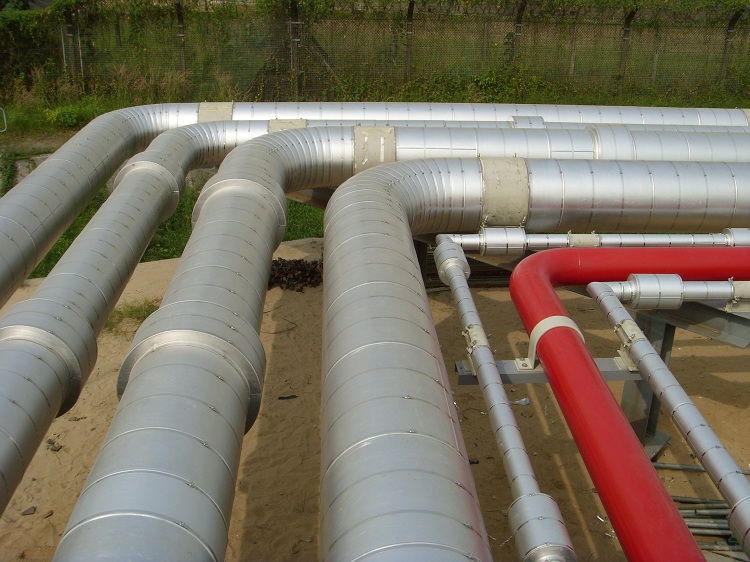
Highly reinforced insulation is used to protect highways operating in difficult climatic conditions.
Materials for insulation of pipelines transporting cold water
To isolate the communications that transport cold water, the following types of insulators are used:
- basalt fiber insulation.Such pipe insulation has a variety of sizes and is available in the form of a cylinder. The main advantage of such a heater is that special trays are not required for the installation of the pipeline, and also such insulation is most effective for communications transporting cold water. In addition, the organization of basalt insulation does not require any special building skills and is characterized by high speed.
- foam rubber (VK). This material has excellent waterproofing properties, and is also able to withstand temperature fluctuations. It has a porous structure of a closed type. Typically, such an insulator is available in the form of tubes or plates. It is also worth noting that foamed rubber is a fire-resistant material and, in case of fire, is self-extinguishing.
- mineral mats. They are made of mineral wool and are used to warm large diameter pipelines. Depending on the design features, three types of mineral mats are distinguished: piercing, foil, lamella.
- fiberglass. This material is not self-sufficient and is used only in combination with other insulators (for example, fiberglass). As a rule, fiberglass mats are used instead of this material. Installation of fiberglass mats is carried out in this way: first, the pipeline is wrapped with mats, then they are fixed with a conventional wire and, finally, the resulting structure is wrapped with polyethylene. This method is considered inconvenient and time-consuming, however, such thermal insulation has proven itself and is quite effective.
- foamed polyethylene (VPE). Such an insulator is made in the form of tubes that have a longitudinal section. The installation of pipes from VPE is simple and high speed. VPE is an environmentally friendly material that is able to withstand temperature fluctuations, and is also resistant to aggressive chemicals. The use of VPE eliminates the occurrence of fungi and mold.
- polyurethane foam (PPU) spraying. This method, from a financial point of view, is the most expensive, however, and the most effective when compared with other pipe insulation options. For applying PPU to the pipe, special spray guns are used. After contact with air, the polyurethane foam hardens and forms a dense protective coating, which has high resistance to low temperatures.
Helpful information! It is worth noting that often after installing the foam shell, additional waterproofing is applied on top. As such a waterproofing can be ordinary polyethylene.
- Styrofoam. Foam insulators are made in the form of a special shell, which is easily put on the pipe. This material is the most common because of its ease of installation. Foam shells can be coated or made without it.
- liquid insulation for pipes. This is a rather specific way to protect pipes from low temperatures. This type of thermal insulation is used quite rarely. The method is based on applying special heat-resistant paint to the pipe.
Heat insulation
For insulation of heating networks, the task of which is to deliver heat from boiler houses to consumers, different insulation materials are used. First of all, such materials are faced with the task of reducing the heat loss coefficient. Heating systems transport two main working environments:
- water;
- steam
Thermal (water and steam) networks are insulated using the following materials:
- mineral wool.It is a fairly common heat insulator, which has a low coefficient of thermal conductivity, and is also resistant to ignition. The properties of mineral wool allow it to be a fairly popular material for thermal insulation of pipeline structures that transport heat. Of the minuses of this material, high cost can be distinguished.
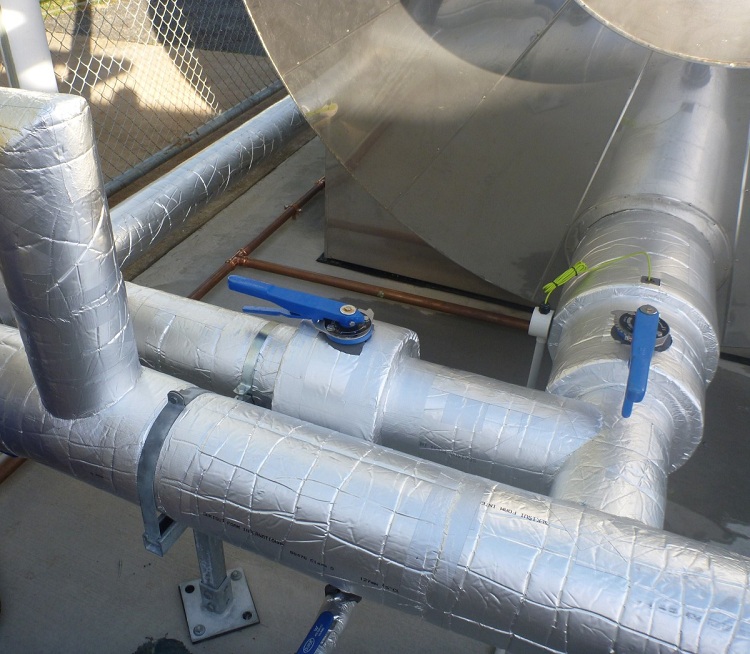
Insulation material for domestic hot water systems and steam pipelines must be such as to minimize possible heat loss
- polyurethane foam (PPU). Distinctive features of this material are low thermal conductivity and high coefficient of waterproofing.
- expanded polystyrene (PPS). This material is, in fact, the same foam and is easy to install on the pipeline. In addition, it is worth noting that the cost of expanded polystyrene is quite low.
- foamed polyethylene (VPE). Tubular material, which occupies a leading position among insulators for heating systems.
- heat-insulating paint. As mentioned above, such material is applied to the pipes using special spray guns and is characterized by high protective characteristics.
Gas pipe insulation
For the insulation of pipes transporting gas, use various options of insulators. For example, it is possible to perform thermal insulation of a gas pipeline using special paint or varnish, but in most cases modern protective materials are used.
What requirements must be met by an insulator for gas pipes:
- first of all, the insulator for the gas pipeline should be able to uniformly, monolithic installation on the pipe;
- and it is also very important that the insulating material for the pipeline has a low coefficient of water absorption and generally high waterproofing properties;
Important! ANDzoThe insulation material must protect the pipe from exposure to ultraviolet radiation, since ultraviolet rays are a destructive factor.
- also high-quality protective material should be highly resistant to corrosion and any other aggressive chemical compounds;
- the insulator should be quite strong to protect the pipeline from mechanical stress;
- the coating should not have any damage (cracks, chips, etc.).
Consider the main types and types of insulation of gas pipelines:
- bituminous mastics. Such heat insulators are produced with various additives, which are mixed with the main material - bitumen. Additives can be of three types:
- Polymer.
- Mineral
- Rubber.
Such additives provide protection against cracking and, in addition, improve adhesion to the surface of the gas pipe. It is also worth noting that bituminous mastics have proven themselves at low temperatures.
- tape materials. Insulating tapes are usually made of polyethylene or polyvinyl chloride (PVC). On one side of such a tape at the production stage, adhesive material is applied, through which the tape is mounted on the gas pipeline.
Depending on the design features of the pipeline and the region in which it is laid, the following types of tape insulation are used:
- Plain.
- Reinforced (CSS).
- Highly Enhanced (VUS).
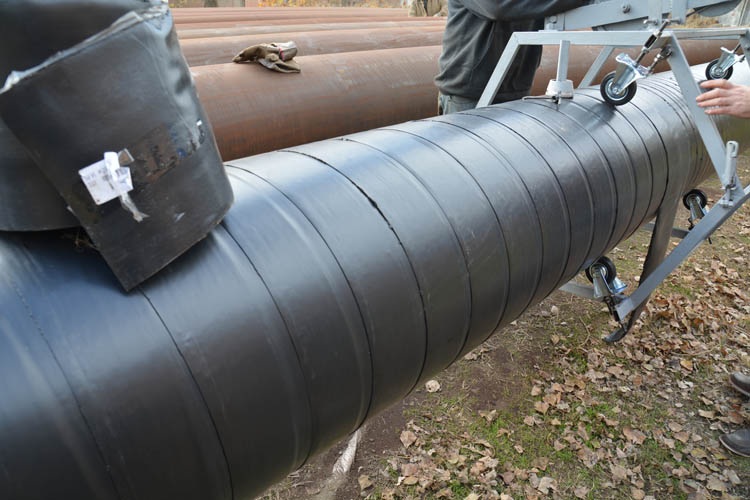
To protect gas pipelines today, tape insulation is often used, which is wound on pipes using a special device
The latter type of insulation is the most reliable and efficient and is most often used to protect pipelines in settlements. WCS is resistant to aggressive corrosive effects and active chemicals.
The WCS is produced using the extrusion method. Pipe insulation with extruded polyethylene is carried out to increase the protective functions of the pipeline. Insulation of pipes with extruded polyethylene is a very reliable protection option.Extruded tapes have excellent waterproofing performance and are installed on pipes that are laid even in adverse climatic conditions.
Underground gas pipeline insulation
Insulation of the underground gas pipeline is necessary to prevent pipe corrosion (due to moisture in the soil). In addition, it is worth noting that the isolation of gas pipes is necessary to protect communication from stray currents.
Note! Stray currents occur if the gas pipeline passes near the roads and railways. And also stray currents can occur in the soil due to the power cables laid in it.
Stray currents adversely affect the walls of the pipeline, which leads to their rapid deterioration and destruction. Especially easy to destroy from such currents are steel pipes that may become worthless during the year of operation, in such cases, isolation of steel underground gas pipelines is necessary. Otherwise, a gas leak may occur, which can lead to serious consequences.
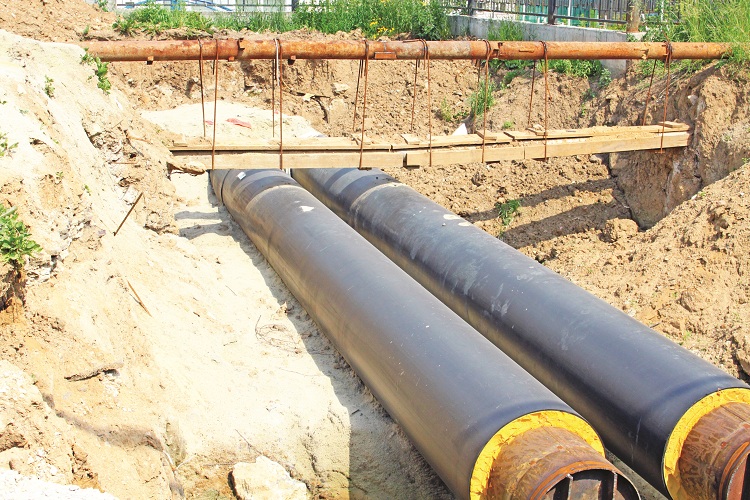
For underground gas pipelines, pipes with factory insulation, for example, from polyurethane foam, are more often used.
Polyurethane foam (PUF) is ideal for isolating underground gas pipelines. It is worth noting that there are two main ways of applying insulation to gas pipes:
- preliminary pipe insulation (applying an insulator to the pipe in the factory);
- installation of insulating material after laying communication.
A pipe insulated with polyurethane foam at the production stage is considered a more reliable and durable solution. In order to ensure good waterproofing of the pipe, the top layer of the protective shell is represented, as a rule, by polyethylene.
And also it is worth noting another important advantage of such insulation - the ability to organize electronic control of a gas pipe. This is a very useful feature that allows you to instantly identify a malfunction in the trunk. Among other things, it is worth noting that such pipes have a fairly affordable price. All of the above advantages allowed pipes with PPU insulation to occupy a leading position in the construction market.
